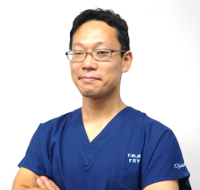 Masanori Maeda, PhD, from the Institute of Advanced Biomedical Engineering and Science, Tokyo Women’s Medical University, in Tokyo, Japan describes this New Methods article “Endoscopic cell sheet transplantation device developed by using a 3-dimensional printer and its feasibility evaluation in a porcine model.”
Masanori Maeda, PhD, from the Institute of Advanced Biomedical Engineering and Science, Tokyo Women’s Medical University, in Tokyo, Japan describes this New Methods article “Endoscopic cell sheet transplantation device developed by using a 3-dimensional printer and its feasibility evaluation in a porcine model.”
This paper describes the development of a new device and method for easy and secure endoscopic cell sheet transplantation. Cell sheets are regenerated tissue from patient’s oral epithelial cells and are transplanted onto an esophagus wall for preventing stenosis after aggressive endoscopic submucosal dissection. This was a clinical trial including 30 patients in Japan and Sweden has already revealed the effectiveness of cell sheet transplantation.
The thickness of a cell sheet is usually less than 200 micrometers, and the conventional transplantation method was not so easy for most endoscopists. We have therefore regarded the establishment of a new transplantation method that enables doctors and researchers to transplant a cell sheet more easily was essential not only for spreading the cell sheet therapy to worldwide patients, but also to boost the basic science of regenerative medicine.
Our medical needs for transplanting an extremely thin therapeutic material like a cell sheet is a new medical demand in the 21st century. It is therefor no wonder there is no suitable medical device or method for handling such a thin material in a body. Furthermore, regenerated tissues for the patient cannot easily be replaced. Therefore a new concept for realizing easy and secure transplantation has been strongly required. We have successfully designed a new endoscopic balloon device. Storing a cell sheet inside the device body by balloon air suction has realized easy delivery and a cell sheet can be adhered onto a gastrointestinal tract securely by just inflating a balloon. The device might improve the effectiveness of cell sheet therapy because a larger area of transplantation leads to be more efficient for preventing stenosis. Currently the concept of the device has been inspiring a new development for other cell sheet transplantation devices like for pharynx, colon, and urethra. I hope our concept for endoscopic manipulation of a thin material would inspire some new developments like a high viscosity ointment or gel that cannot be injected with current endoscopic needles.

After several improvements including an increase in device size variation, the device has been applied in clinical studies in Japan and Sweden. It’s feasibility for treating a patient has been successfully found. Finishing process of product development including achieve CE mark approval is now in progress with more than 14 Japanese relatively small manufactures. They are a new challenger for medical devices.
Find the abstract for this article online.
The information presented in Endoscopedia reflects the opinions of the authors and does not represent the position of the American Society for Gastrointestinal Endoscopy (ASGE). ASGE expressly disclaims any warranties or guarantees, expressed or implied, and is not liable for damages of any kind in connection with the material, information, or procedures set forth.
